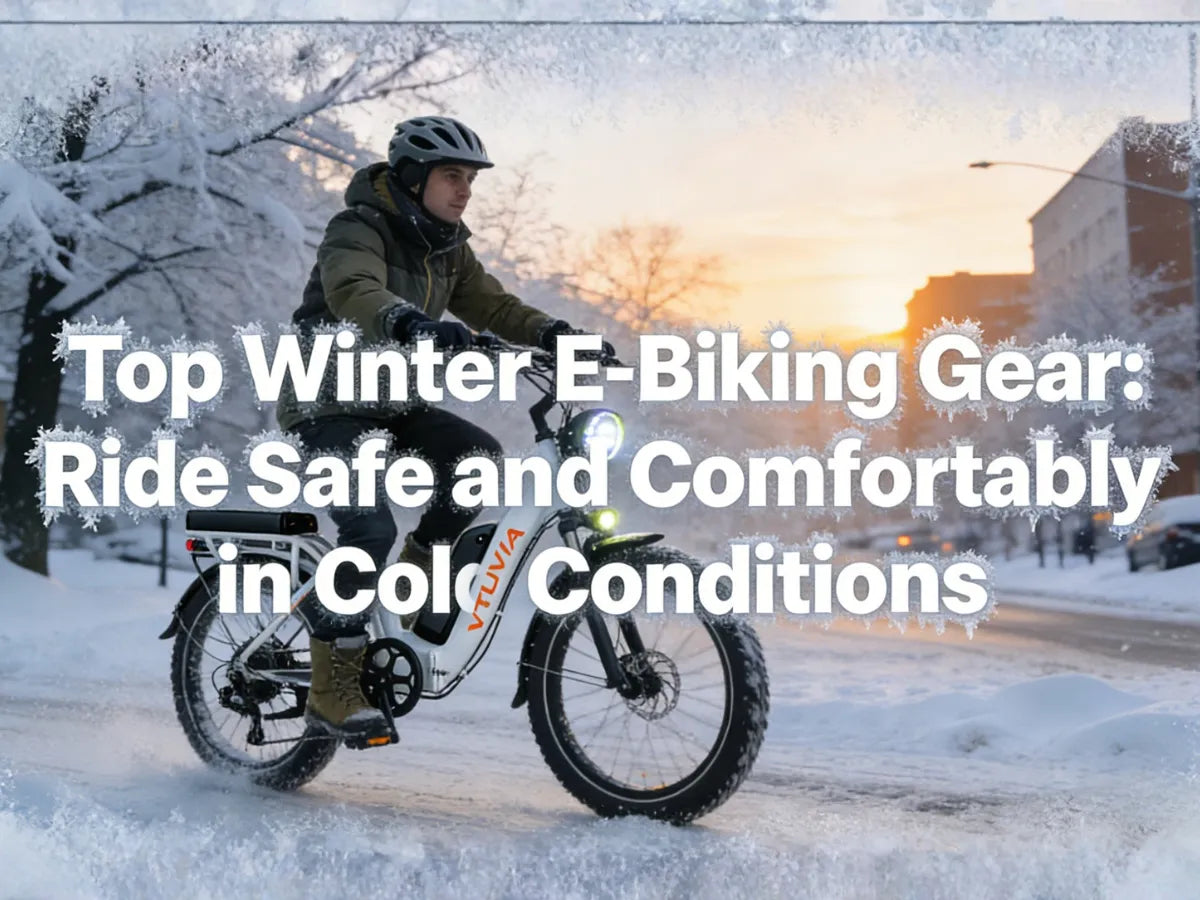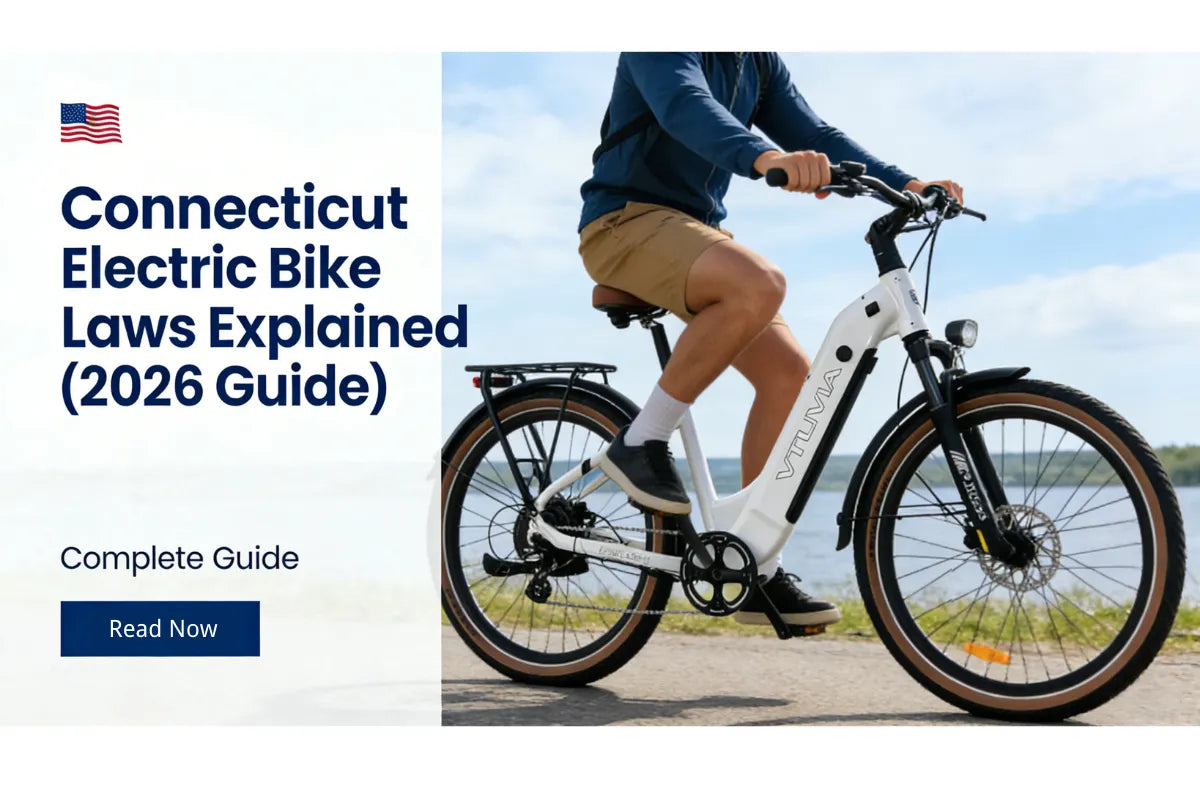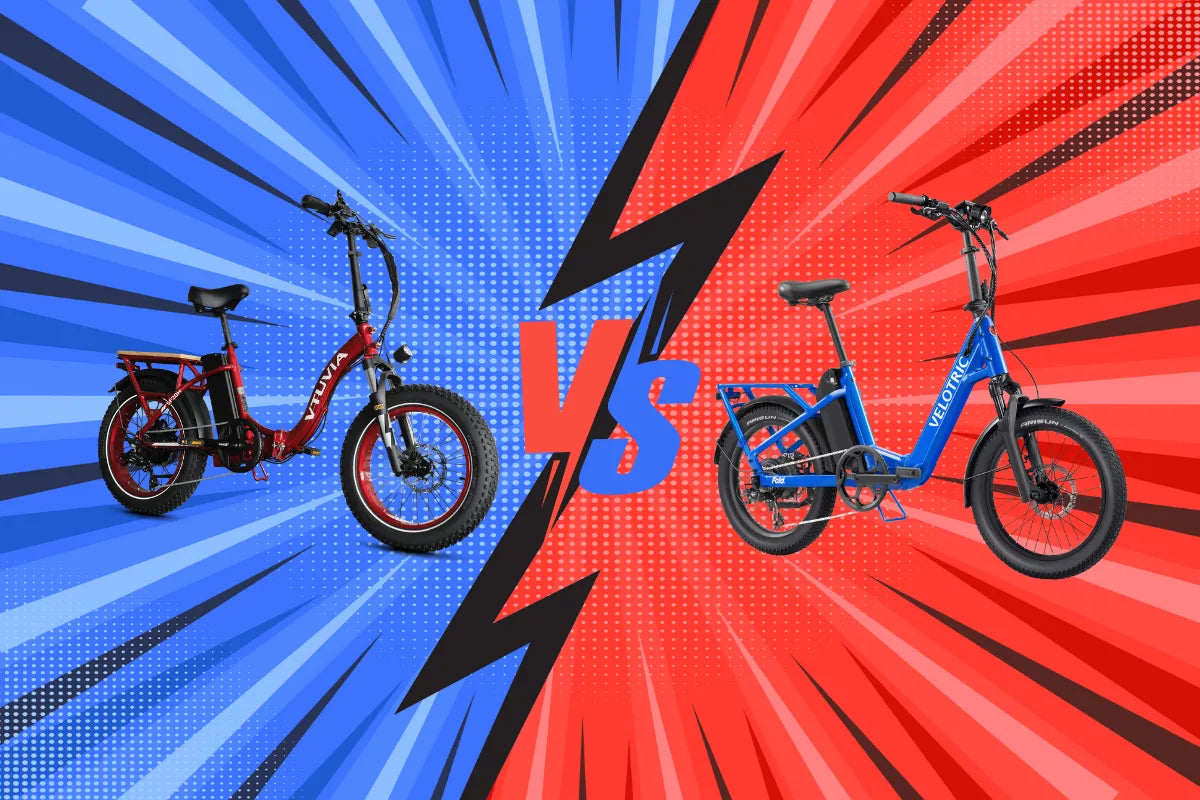Introduction: Why eBike Brake Maintenance Matters
- Proper brake maintenance ensures your safety and optimal eBike performance.
- Understanding mechanical vs. hydraulic disc brakes is key for regular eBike brake care.
- Statistics show brake-related failures account for a significant portion of eBike accidents.
- Regular maintenance prolongs the lifespan of brake pads and rotors.
- Keeping your eBike brakes in top condition improves stopping power, responsiveness, and reliability.
Understanding Your eBike Brake System

Types of eBike Brakes
- Mechanical Disc Brakes: Cable-operated, simple design, cost-effective, suitable for entry-level eBikes. Reliable for everyday riding.
- Hydraulic Disc Brakes: Fluid-operated, precise braking, found on mid-to-high-end eBikes. Offers strong stopping power and smooth modulation.
- V-Brakes: Rim-based brakes that are lightweight and inexpensive, but their braking performance is significantly weaker compared to disc brakes, especially in wet or off-road conditions. VTUVIA does not use V-brakes due to safety concerns, and we recommend avoiding them for eBikes.
- Comparison table: performance, maintenance needs, cost, and durability for mechanical vs hydraulic vs V-brake systems.
Brake Components You Should Know
- Brake pads, rotors, calipers, and levers
- Springs, pins, and pistons
- Rotor size compatibility and selection
- How to recognize wear or damage on each component
- Key tips for prolonging component life through regular inspection
Tools and Preparation for eBike Brake Maintenance
Essential Tools
- Allen keys / hex wrenches for calipers and levers
- Needle-nose pliers for clips and pins
- Clean rags and microfiber cloths
- Isopropyl alcohol or disc cleaner for pads and rotors
- Brake pad spreader or flat-head screwdriver
- Optional: bike repair stand, protective gloves
Safety Precautions Before Working on eBike Brakes
- Remove or secure the battery to prevent electrical shorts during maintenance.
- Wear gloves to avoid contaminating brake pads with oils.
- Prepare a clean workspace with good lighting.
- Take photos of current brake setup for reference before disassembly.
- Never open hydraulic master cylinders or battery/motor cases—leave complex repairs to professionals.
Step-by-Step eBike Brake Pad Replacement
Inspecting Brake Pads
- Look for thin pads, grooves, or unusual squealing sounds.
- Measure pad thickness and replace if below manufacturer’s recommended minimum.
- Check rotor for warping, scratches, or contamination.
- Confirm caliper alignment before removing old pads.
Removing Old Brake Pads
- Loosen caliper mounting bolts carefully.
- Remove cotter pins or retaining clips.
- Slide out old brake pads safely, avoiding direct rotor contact.
- Keep removed pads for reference or proper disposal.
Piston Stroke Reset (Hydraulic-Specific)
- Gently push pistons back using a plastic or dedicated tool.
- Avoid using metal tools that may damage seals.
- Ensure fork spring alignment before inserting new pads.
Installing New Pads
- Insert pads with springs facing inward toward caliper.
- Secure cotter pins or retaining clips properly.
- Reattach caliper to frame and check lever modulation.
- Reinstall wheel and confirm rotor spins freely without rubbing.
Bedding-in New Brake Pads
- Perform gentle braking cycles at low speed to conform pads to rotor surface.
- Example: 5–10 gradual stops to ensure full contact and optimal braking.
- Check for squeals, uneven wear, or misalignment after first ride.
Advanced Brake Adjustments for Optimal eBike Performance
Caliper Centering
- Loosen caliper bolts and press brake lever to center rotor between pads.
- Tighten bolts alternately while maintaining lever pressure.
- Test alignment and braking response after adjustment.
Modulating Brake Lever Feel
- Mechanical brakes: adjust cable tension for firm yet smooth lever feel.
- Hydraulic brakes: verify lever pressure and responsiveness.
- Troubleshoot spongy or stiff levers before riding.
Replacing Hydraulic Brake Fluid
- Use manufacturer-recommended fluid (mineral oil or DOT).
- Follow proper bleeding procedures to avoid air bubbles.
- Service interval: typically every 12–18 months depending on eBike usage.
Maintenance Tips for Brake Longevity
- Clean rotors and calipers with isopropyl alcohol regularly.
- Inspect pads weekly or monthly depending on riding frequency.
- Keep all components free of contaminants like oil, grease, or dirt.
- Record brake maintenance in a log for reference.
- Check caliper bolts and rotor alignment after heavy rides or impacts.
Beginner’s Pre-Ride eBike Brake Checklist
- Carry spare brake pads.
- Bring a portable pump and multi-tool with Allen keys.
- Rags and alcohol wipes for quick cleaning.
- Optional: spare rotor bolts, cotter pins.
- Verify lever feel, rotor clearance, and brake responsiveness before each ride.
Common Problems and Troubleshooting eBike Brakes
- Brake rubbing or misalignment causing friction or noise.
- Air in hydraulic lines reducing lever pressure.
- Contaminated pads from oil or debris.
- Uneven pad wear due to misalignment or improper bedding.
- Noise issues: squeal, grinding, or soft lever feel.
Debunking Three Common Myths About eBike Brakes
- Myth 1: Any bike brake works on an eBike. → eBikes require stronger, high-performance components.
- Myth 2: Higher PSI always improves braking. → Optimal pressure depends on brake type and riding conditions.
- Myth 3: Tubeless tires prevent brake issues. → Rotor-pad interaction still matters for stopping power.
The Future of eBike Brakes
- Self-adjusting calipers for maintenance-free performance.
- Smart brake monitoring with digital readouts for hydraulic systems.
- New pad materials and rotor coatings to extend lifespan.
- Integration with regenerative braking systems for advanced eBikes.
FAQs
A: Typically 20–30 minutes for mechanical brakes, longer for hydraulic systems.
A: No, hydraulic brakes require specialized tools for bleeding fluid.
A: Every 12–18 months depending on eBike type and usage.
A: Look for rubbing, uneven braking, or visible bends in the rotor.
A: Yes, gentle braking cycles improve pad-rotor contact and performance.
Conclusion
Proper eBike brake maintenance ensures safety, optimal performance, and longer lifespan of your components. Regular inspection, timely replacement of pads, and careful adjustments are key. For more tips, check out our full VTUVIA eBike maintenance guide. Share your experiences and tips in the comments to help other riders keep their eBikes safe and smooth.
Check out our VTUVIA eBike products and accessories for easy maintenance. Subscribe to our newsletter for weekly tips, DIY guides, and exclusive offers!





Share:
How to Replace an eBike Tire at Home (Step-by-Step)
The Ultimate Guide to Charging Your E-Bike: Everything You Need to Know